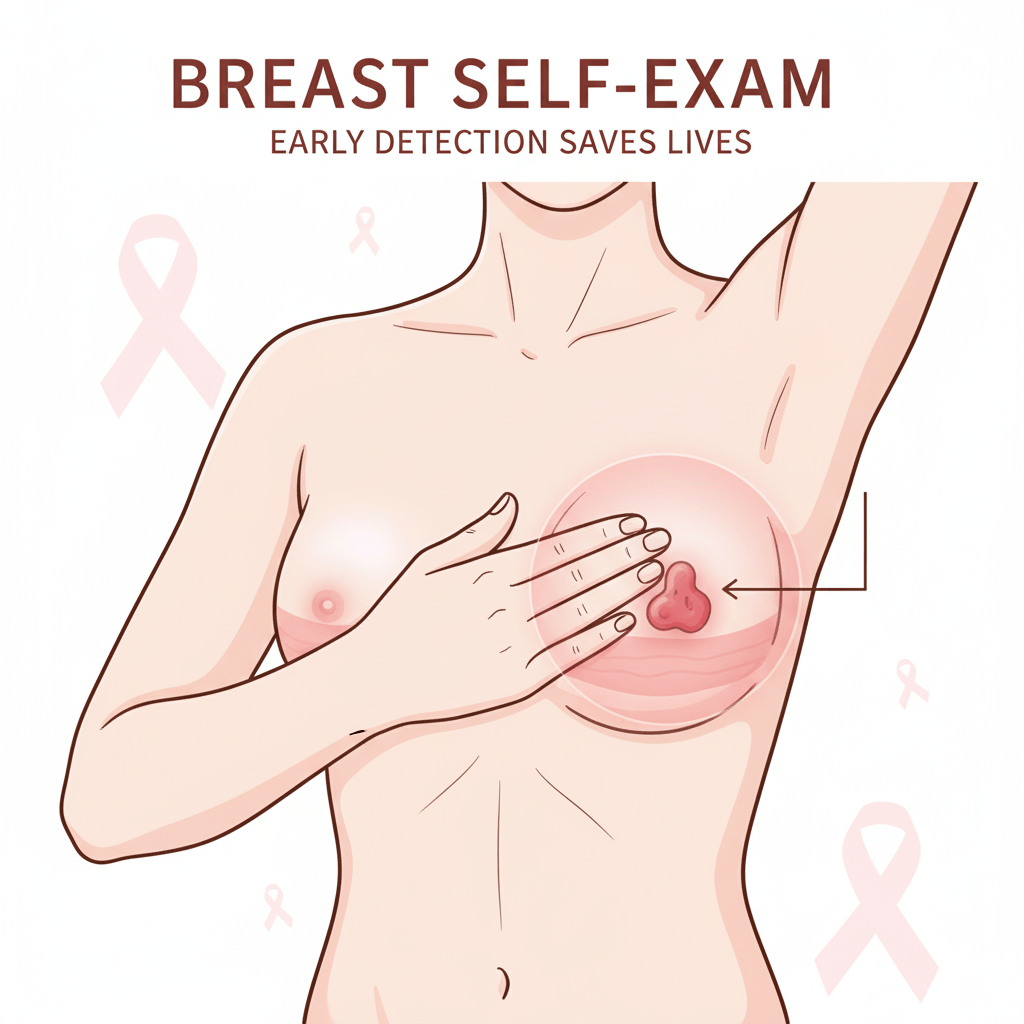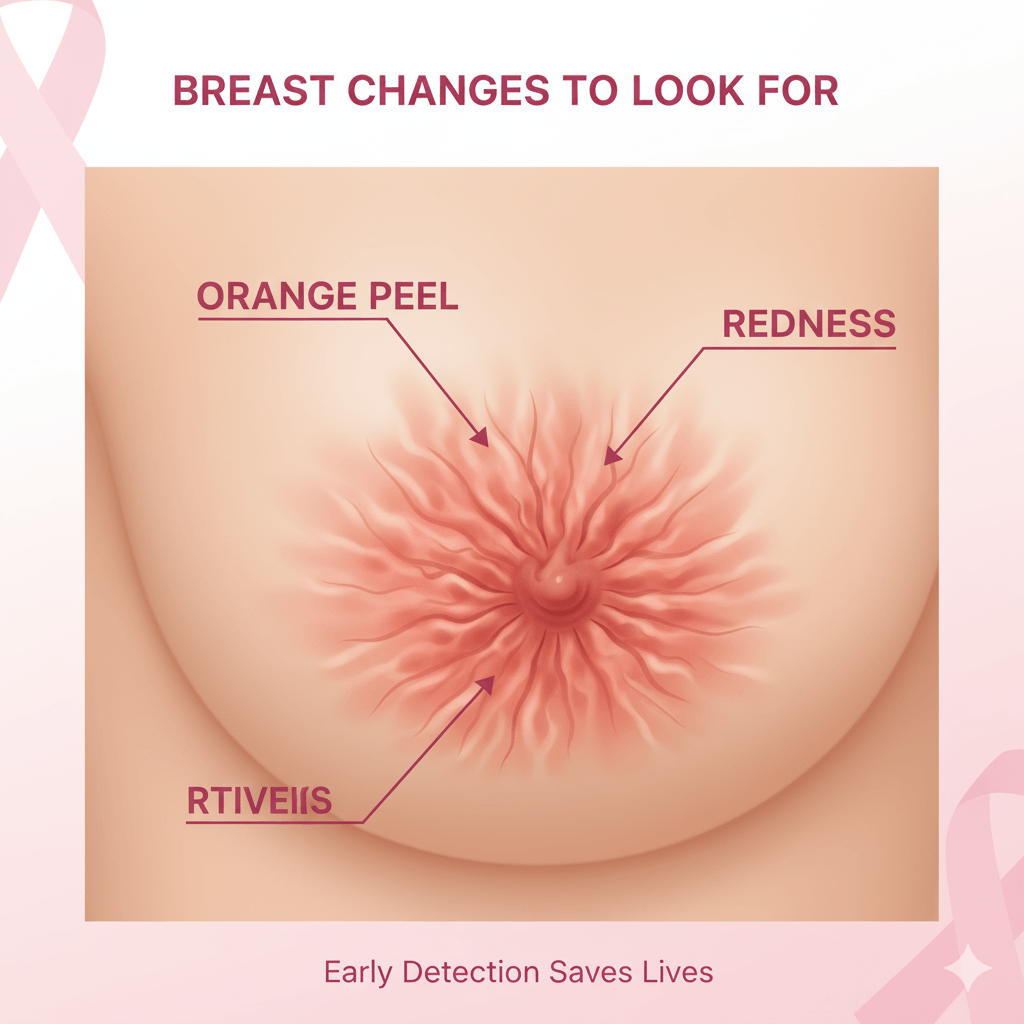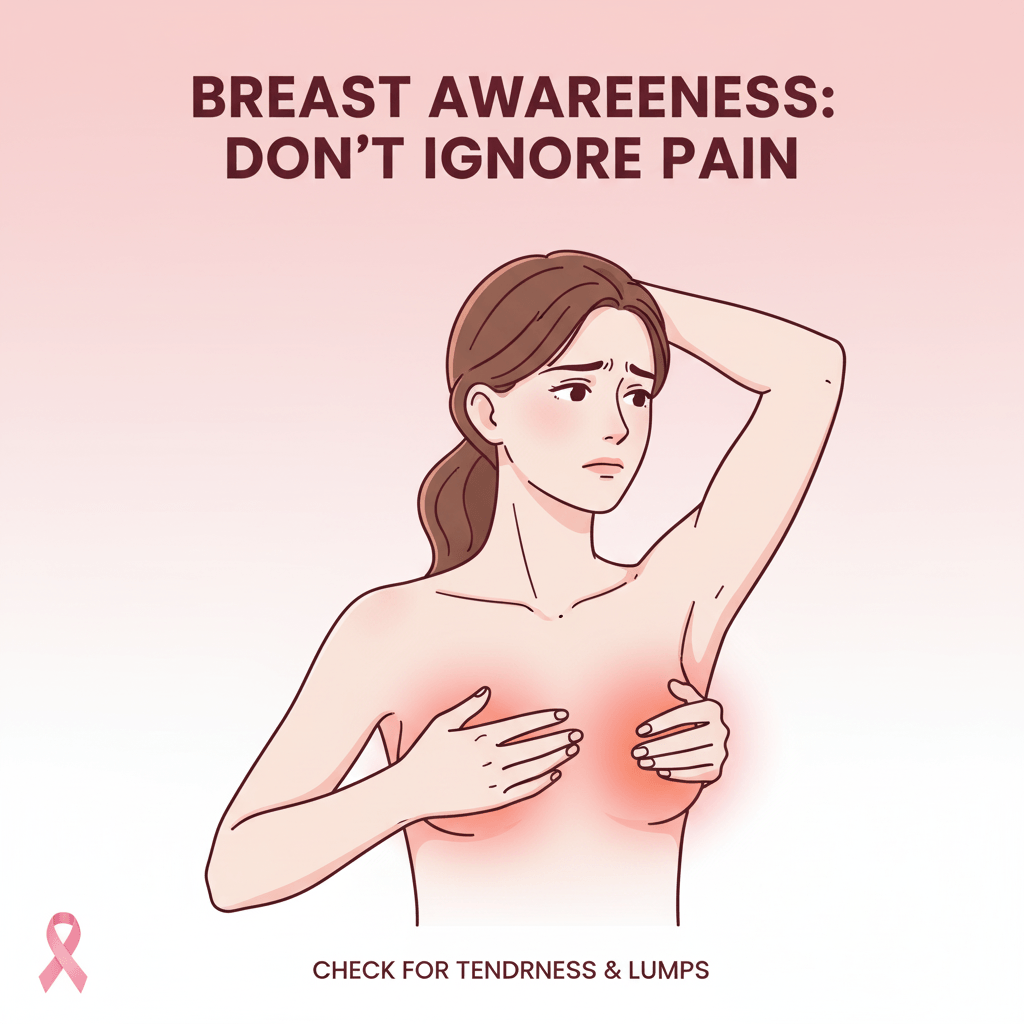
Early Signs of Breast Cancer: Symptoms Every Woman Should Know
Early Signs of Breast Cancer You Should Never Ignore
Introduction
Breast cancer is one of the most common cancers among women worldwide, but when detected early, it is also one of the most treatable.
Recognizing the early signs can make a life-saving difference.
Every woman should be aware of how her breasts normally look and feel, so she can identify changes quickly and consult a healthcare provider for evaluation.
In this article, we’ll discuss the most important early signs and symptoms of breast cancer, why they happen, and when you should seek medical advice.
1. A Lump or Thickening in the Breast or Underarm
A lump is often the first noticeable symptom of breast cancer.
It can feel hard, irregular in shape, and fixed to the surrounding tissue.
However, not all lumps are cancerous — some may be benign cysts or fibroadenomas.
Cancerous lumps are usually painless, but any new lump should always be checked by a doctor.
Lumps can also appear in the armpit, where lymph nodes are located, especially if cancer cells have spread to nearby tissue.
Tip: The best time to perform breast self-examination is a few days after your period ends, when breast tissue is less swollen or tender.

2. Changes in Breast Size or Shape
A sudden change in breast size, shape, or contour — especially if only one breast is affected — can signal an underlying issue.
You may notice that one breast looks larger, fuller, or swollen, or that the contour has changed.
This happens when cancer causes inflammation or affects the structure of the breast tissue.
If these changes persist and are not related to your menstrual cycle or weight fluctuations, consult a healthcare professional.

3. Skin Changes: Redness, Dimpling, or Thickening
Breast cancer can sometimes cause visible skin changes, including:
Redness or rash-like appearance
Thickening or dimpling of the skin (often described as “peau d’orange” or orange peel texture)
Warmth or swelling
These changes occur because of inflammation or blockage of lymph vessels in the breast.
They can be signs of inflammatory breast cancer, a rare but aggressive form that requires urgent medical attention.

4. Nipple Changes or Discharge
Changes in the nipple area are another warning sign. These include:
Nipple inversion (turning inward)
Changes in position or shape
Scaling, crusting, or sores on the nipple
Discharge that is clear, bloody, or unusual
While nipple discharge can result from benign conditions like infections or hormonal changes, bloody or persistent discharge needs immediate evaluation.
5. Pain or Tenderness in the Breast
Breast cancer is not always painful, but some women experience persistent discomfort, tenderness, or burning sensations.
Pain that is localized in one area and does not change with the menstrual cycle may warrant further investigation.
Although most breast pain is not cancer-related, ongoing pain without an obvious cause should not be ignored.

6. Swelling or Lump in the Armpit
Swelling or a lump under the arm or near the collarbone may indicate that breast cancer cells have spread to nearby lymph nodes.
This may occur before a lump is even felt in the breast.
Regularly checking these areas during self-examination helps detect subtle changes early.

7. Unexplained Changes in Breast Texture or Sensation
Some women notice their breast feels different — heavier, denser, or firmer than usual.
These changes can develop slowly, making them easy to overlook.
Comparing both breasts regularly helps spot differences in texture, firmness, or elasticity.
8. Visible Veins or Skin Discoloration
Prominent veins appearing on one breast or skin discoloration that doesn’t fade can sometimes indicate increased blood flow to a tumor or blockage in the lymphatic drainage.
Although rare, it’s worth mentioning these changes to your doctor during an examination.
9. Non-Healing Sores or Irritation
Persistent sores or skin irritation on or around the breast and nipple area that do not heal may indicate skin involvement by cancer cells.
Never ignore chronic irritation, scaling, or wounds that keep coming back.
10. Changes After Menopause
After menopause, the breasts normally become softer and less dense.
Any new lump, pain, or change after this stage is more concerning and should always be checked promptly, as the risk of breast cancer increases with age.
When to See a Doctor
If you notice any of the following, schedule a medical evaluation immediately:
A new lump or thickened area in the breast or armpit
Persistent breast or nipple pain
Unexplained discharge or skin changes
Swelling, redness, or warmth that doesn’t improve
Early medical consultation allows for diagnostic imaging such as mammograms or ultrasounds, and if needed, biopsy for confirmation.
Early-stage breast cancer has a very high survival rate when detected and treated promptly.
How to Monitor Your Breast Health
1. Perform monthly self-exams:
Do this a few days after your menstrual cycle ends.
2. Schedule regular screenings:
Mammograms are recommended every 1–2 years after age 40, or earlier if you have risk factors.
3. Know your family history:
A family history of breast or ovarian cancer increases your risk.
4. Maintain a healthy lifestyle:
Balanced nutrition, regular physical activity, limited alcohol, and avoiding smoking all support breast health.
5. Report any changes immediately:
Do not wait for your next check-up if you notice abnormalities.
Conclusion
Breast cancer awareness saves lives.
Understanding the early signs empowers you to take charge of your health and seek medical help before the disease progresses.
Remember — not every change means cancer, but every unusual change deserves attention.
Early detection remains the most effective weapon against breast cancer.
Make self-examination and regular screening a lifelong habit.
Your health is worth the attention — start observing, stay informed, and act early.
